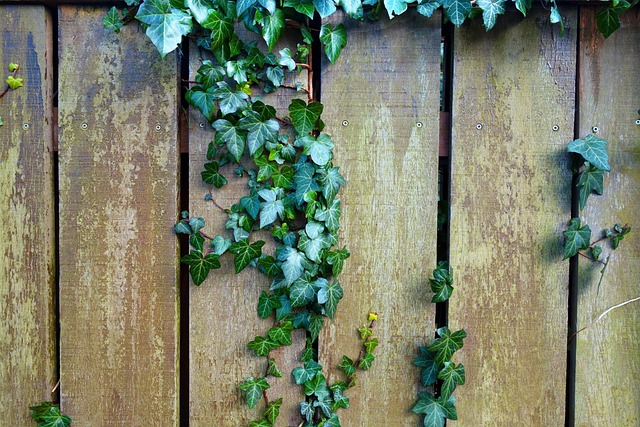Introduction:
Maintaining an appealing and durable wooden fence requires thoughtful consideration of staining and sealing. This comprehensive guide delves into the intricacies of fence staining, exploring its numerous benefits and diverse types. We’ll walk you through the preparation process, from cleaning and repairing your fence to selecting the perfect color and stain application techniques. Furthermore, we’ll emphasize the vital role of sealing for protection and provide essential maintenance tips to ensure your fence remains a striking and long-lasting addition to your outdoor space.
- Understanding Fence Staining: Benefits and Types
- Preparation: Cleaning and Repairing Your Wooden Fence
- Choosing the Right Stain: Color Options and Application
- Sealing for Protection: The Importance and Process
- Maintenance Tips to Keep Your Fence Looking New
Understanding Fence Staining: Benefits and Types
Fence staining is a popular choice for homeowners looking to enhance the aesthetics and protect their wooden fences. It involves applying a pigmented sealer or paint to the fence’s surface, offering numerous advantages. Firstly, it provides an array of color options, allowing you to transform your fence into a stunning focal point in your outdoor space. Secondly, staining creates a protective barrier against elements like UV rays, rain, and snow, which can fade and damage untreated wood over time.
There are various types of fence staining solutions available, each with unique characteristics. Water-based stains are environmentally friendly, quick-drying, and easy to clean up. They provide a subtle, natural finish while still offering some protection. On the other hand, oil-based stains offer superior durability and resistance to fading, making them ideal for high-traffic areas or where prolonged exposure to the elements is expected.
Preparation: Cleaning and Repairing Your Wooden Fence
Before applying any stain or sealer, it’s crucial to prepare your wooden fence properly. Start by thoroughly cleaning the fence to remove any dirt, dust, mildew, or mold. Use a pressure washer or a soft-bristled brush and a mild detergent to ensure the surface is free from contaminants. This step is essential as it allows the stain and sealer to adhere better, resulting in a longer-lasting finish.
Inspect your fence for any damaged or rotten sections. Repair these areas by replacing the affected boards or using wood putty to fill gaps and cracks. Sanding the fence lightly can also help create a smooth surface and improve the overall appearance. Removing loose particles ensures that the new coat of stain or sealer covers evenly, enhancing the protection and aesthetic appeal of your wooden fence.
Choosing the Right Stain: Color Options and Application
When it comes to choosing the right fence stain, color options are vast and varied. From earthy tones like browns and tans to vibrant reds, blues, and even greens, there’s a shade to suit every aesthetic preference. Consider not just your desired look but also the existing color of your wood and the amount of sunlight your fence receives—darker stains absorb more light, while lighter shades reflect it, influencing how long each type will last.
Application is another key factor. Some stains are designed for a one-coat application, offering ease and efficiency, while others require multiple coats to achieve maximum coverage and depth of color. Read the product instructions carefully, ensuring you have the necessary tools—brushes, rollers, or sprayers—to apply the stain evenly. This step is crucial not only for an attractive finish but also for protecting your wood from the elements over time.
Sealing for Protection: The Importance and Process
Sealing a wooden fence is an essential step in maintaining its integrity, aesthetics, and longevity. Over time, wood is susceptible to weather damage, especially from moisture and UV rays, which can cause it to rot, crack, or fade. Sealing acts as a protective barrier, shielding the fence from these elements. It forms a shield on the wood’s surface, preventing water absorption and reducing the impact of sun exposure.
The process typically involves cleaning the fence to remove any dirt, grease, or previous sealers, then applying a high-quality sealer suitable for outdoor use. This can be done with a brush or roller, ensuring even coverage. Sealing should be repeated every few years to maintain protection, especially in regions with varying weather conditions or high rainfall.
Maintenance Tips to Keep Your Fence Looking New
Regular maintenance is key to keeping your wooden fence looking new and vibrant. After staining or sealing, it’s crucial to establish a routine cleaning schedule. This involves regularly brushing away dirt, leaves, and debris that can dull the finish over time. A soft-bristled brush and mild detergent or soapy water are usually sufficient for this task.
Additionally, inspecting your fence for any signs of wear, chipping, or peeling is essential. Addressing these issues promptly will prevent further damage. Repaint or reapply sealants as needed to maintain the protective barrier against elements like sun exposure, rain, and extreme temperatures. Remember, consistent upkeep ensures your fence not only looks new but also retains its structural integrity for years to come.
